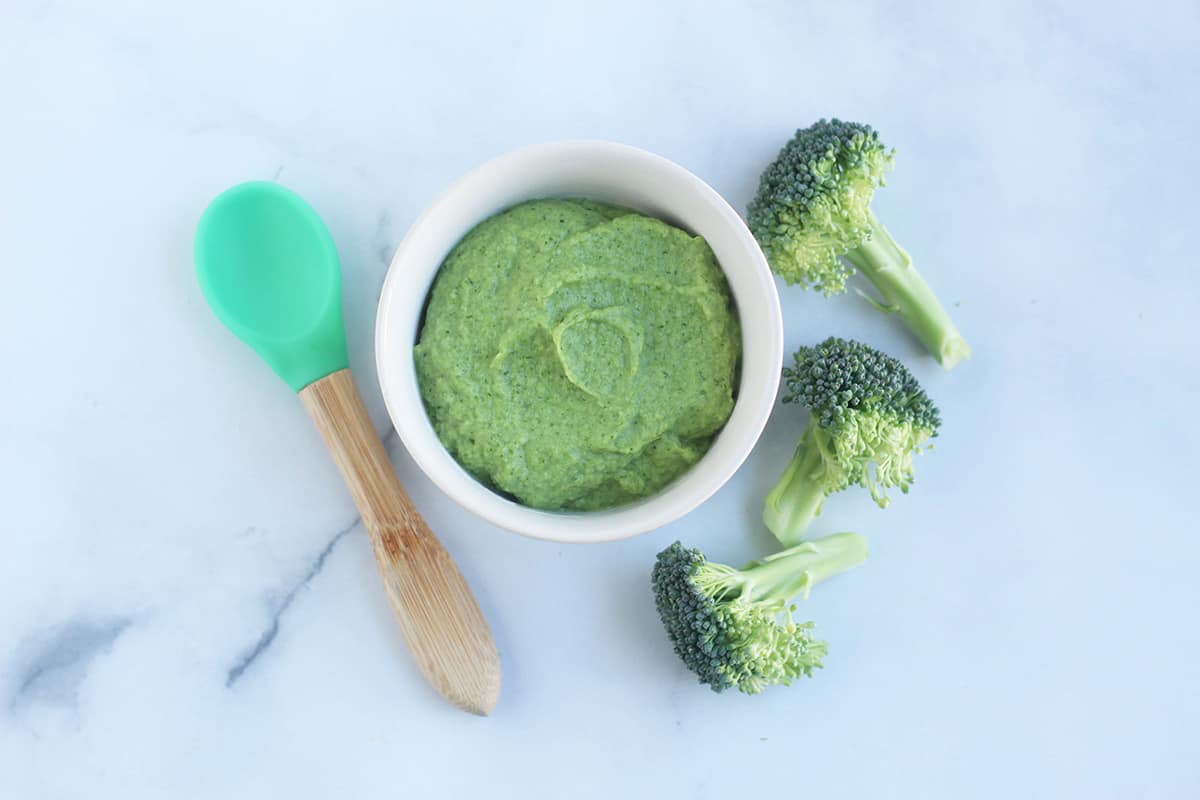Babies can be very fussy about eating veggies. That cute tiny thing will give you a yucky expression as you put some broccoli into its mouth. Fortunately, any child below one year has no favorite meal yet; they will feed on anything given to them in minutes.
How, then, do you present broccoli to your baby? When do I start giving it to my baby? How do you make a baby love broccoli and enjoy the meal? These are some of the questions you might be asking yourself. Fortunately, in this article, we will answer all your queries and take you through a detailed guide on the benefit of giving broccoli to your baby and how you can prepare it as part of your child’s diet.
When Can Babies Eat Broccoli?
You can introduce broccoli to your baby as soon as they are ready to start solids. This can be done from as early as six months. Broccoli is a great veggie for your kid since it is nutritious, easy to make, and can be served in many ways.
However, for a six-month baby, you must cook it to be very soft and either smash or blend it for easy swallowing. Make sure it is soft enough by squashing it between your finger and thumb. With its perfect size and shape, this veggie is a superfood for your baby, making it one of the best first foods for baby-led weaning.
Is Broccoli Healthy For Babies?
Yes, this cabbage sprout is a nutritional powerhouse bursting with goodness. Broccoli is a great source of vitamin A, which helps in supporting eye health and fiber for healthy digestion. It also contains vitamin B6 and folate, which helps brain and body development.
Scientists have proven broccoli to help inhibit the development of various types of cancer since it abounds with phytochemicals like sulforaphane. Feeding your baby broccoli is necessary for growth and development since it has about 2.5g of protein per 100g.
How to Prepare Broccoli for Baby-Led Weaning
To get the most out of broccoli, you can either steam or microwave it to retain its nutrients instead of boiling it. Also, you can roast it, although this method may make its texture tougher.
Therefore, roasted broccoli can be given to a baby that has already begun teething at least nine months and above. For younger babies, steamed broccoli is okay since it is soft enough for their tender gums.
Babies between 6 months – 9 months
At this age, the bigger, the better because of the present palmar grasp. Therefore, steam your broccoli and serve your baby either the large floret or the stem.
First, you must ensure they are very soft by piercing them with a fork. Babies from this age are very curious and touchy, and once you present the large broccoli floret with the stem facing up, they will quickly pick it up and place it in their mouth.
The other option is to give the baby the cooked broccoli stems. Gently peel off the tough outer layer and steam it until it is very soft for the baby. Then, cut the stem vertically in half to help the baby grip the pieces better since it will no longer be cylindrical.
Also, if you serve it as a first food for baby-led weaning, you can mash or blend the steamed broccoli to be smooth and textured. Either way, you can grate the raw broccoli and fold it into finger foods like egg strips and cups.
Babies Nine months +
At this point, your baby must have developed its pincer grasp. Therefore, they can easily pick up smaller pieces of food using their fingers. Only when your baby is fully comfortable picking and eating can you begin offering pieces of evenly sliced broccoli.
You can do this in stages as you keep reducing the floret sizes. Better yet, you can mix a variety of shapes and sizes and watch which ones the baby prefers.
As soon as your baby gets used to this, you can decrease the steaming time from about one year and above. Then, move to every stage according to your child’s abilities as they transition. From here, you can incorporate broccoli into any meal you desire.
Is Broccoli A Common Choking Hazard And Allergen For Babies?
Raw or undercooked broccoli can be a choking hazard for babies since it is firm and hard to chew. To reduce this risk, you must ensure the broccoli is well-cooked and very soft. Also, for the stem, cut them into evenly sized vertical half before steaming.
Allergies to broccoli are very rare. However, people sensitive to another member of the broccoli family, like cauliflower, might also be allergic to this veggie. Therefore, to prevent this, begin giving broccoli to your baby in small portions as you look out for any possible allergic reaction or sign before gradually increasing the amount.
Can Broccoli Help Babies Poop?
Broccoli has an outstanding amount of soluble and insoluble fibers, phenolic compounds, and glucosinolates that help regulate bowel and general digestive health. Talk to your pediatric health provider for guidance if you notice unusual pooping patterns in your baby.
Conclusion
Babies have twice as many taste buds as adults making them more sensitive to bitter taste. Broccoli has a certain level of bitterness due to glucosinolate compounds. This bitter taste may make your child dislike the meal.
However, introducing broccoli as their first food for baby-led weaning will increase the chances of them liking it for life. All you have to do is remain consistent and patient with your little human. At least give it as a meal every week or incorporate it as a weekly vegetable for the entire family.
The more your child eats broccoli, the more they will love it since familiarity is the key here. Make broccoli as fun as possible by serving and cooking it differently, decorating it with mashed potatoes and peas, or making a seascape-like presentation.
